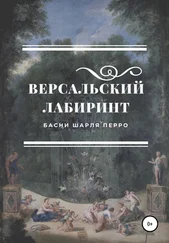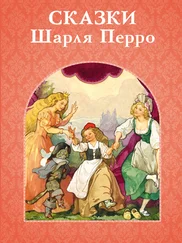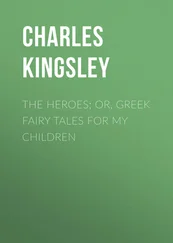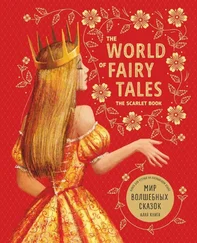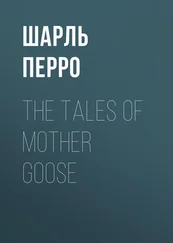Шарль Перро - The Fairy Tales of Charles Perrault
Здесь есть возможность читать онлайн «Шарль Перро - The Fairy Tales of Charles Perrault» — ознакомительный отрывок электронной книги совершенно бесплатно, а после прочтения отрывка купить полную версию. В некоторых случаях можно слушать аудио, скачать через торрент в формате fb2 и присутствует краткое содержание. Жанр: foreign_antique, foreign_prose, Сказка, на английском языке. Описание произведения, (предисловие) а так же отзывы посетителей доступны на портале библиотеки ЛибКат.
- Название:The Fairy Tales of Charles Perrault
- Автор:
- Жанр:
- Год:неизвестен
- ISBN:нет данных
- Рейтинг книги:3 / 5. Голосов: 1
-
Избранное:Добавить в избранное
- Отзывы:
-
Ваша оценка:
- 60
- 1
- 2
- 3
- 4
- 5
The Fairy Tales of Charles Perrault: краткое содержание, описание и аннотация
Предлагаем к чтению аннотацию, описание, краткое содержание или предисловие (зависит от того, что написал сам автор книги «The Fairy Tales of Charles Perrault»). Если вы не нашли необходимую информацию о книге — напишите в комментариях, мы постараемся отыскать её.
The Fairy Tales of Charles Perrault — читать онлайн ознакомительный отрывок
Ниже представлен текст книги, разбитый по страницам. Система сохранения места последней прочитанной страницы, позволяет с удобством читать онлайн бесплатно книгу «The Fairy Tales of Charles Perrault», без необходимости каждый раз заново искать на чём Вы остановились. Поставьте закладку, и сможете в любой момент перейти на страницу, на которой закончили чтение.
Интервал:
Закладка:
Charles Perrault
The Fairy Tales of Charles Perrault
INTRODUCTION
"Avec ardeur il aima les beaux arts."
GriselidisCharles Perrault must have been as charming a fellow as a man could meet. He was one of the best-liked personages of his own great age, and he has remained ever since a prime favourite of mankind. We are fortunate in knowing a great deal about his varied life, deriving our knowledge mainly from D'Alembert's history of the French Academy and from his own memoirs, which were written for his grandchildren, but not published till sixty-six years after his death. We should, I think, be more fortunate still if the memoirs had not ceased in mid-career, or if their author had permitted himself to write of his family affairs without reserve or restraint, in the approved manner of modern autobiography. We should like, for example, to know much more than we do about the wife and the two sons to whom he was so devoted.
Perrault was born in Paris in 1628, the fifth son of Pierre Perrault, a prosperous parliamentary lawyer; and, at the age of nine, was sent to a day-school – the Collège de Beauvais. His father helped him with his lessons at home, as he himself, later on, was accustomed to help his own children. He can never have been a model schoolboy, though he was always first in his class, and he ended his school career prematurely by quarrelling with his master and bidding him a formal farewell.
The cause of this quarrel throws a bright light on Perraults subsequent career. He refused to accept his teacher's philosophical tenets on the mere ground of their traditional authority. He claimed that novelty was in itself a merit, and on this they parted. He did not go alone. One of his friends, a boy called Beaurain, espoused his cause, and for the next three or four years the two read together, haphazard, in the Luxembourg Gardens. This plan of study had almost certainly a bad effect on Beaurain, for we hear no more of him. It certainly prevented Perrault from being a thorough scholar, though it made him a man of taste, a sincere independent, and an undaunted amateur.
In 1651 he took his degree at the University of Orléans, where degrees were given with scandalous readiness, payment of fees being the only essential preliminary. In the mean-time he had walked the hospitals with some vague notion of following his brother Claude into the profession of medicine, and had played a small part as a theological controversialist in the quarrel then raging, about the nature of grace, between the Jesuits and the Jansenists. Having abandoned medicine and theology he got called to the Bar, practised for a while with distinct success, and coquetted with a notion of codifying the laws of the realm. The Bar proved too arid a profession to engage for long his attention; so he next sought and found a place in the office of another brother, Pierre, who was Chief Commissioner of Taxes in Paris. Here Perrault had little to do save to read at large in the excellent library which his brother had formed.
For want of further occupation he returned to the writing of verse, one of the chief pleasures of his boyhood. His first sustained literary effort had been a parody of the sixth book of the "Æneid"; which, perhaps fortunately for his reputation, was never published and has not survived. Beaurain and his brother Nicholas, a doctor of the Sorbonne, assisted him in this perpetration, and Claude made the pen-and-ink sketches with which it was illustrated. In the few years that had elapsed since the writing of this burlesque Perrault had acquired more sense and taste, and his new poems – in particular the "Portrait d'Iris" and the "Dialogue entre l'Amour et l'Amitié" – were found charming by his contemporaries. They were issued anonymously, and Quinault, himself a poet of established reputation, used some of them to forward his suit with a young lady, allowing her to think that they were his own. Perrault, when told of Quinault's pretensions, deemed it necessary to disclose his authorship; but, on hearing of the use to which his work had been put, he gallantly remained in the background, forgave the fraud, and made a friend of the culprit.
Architecture next engaged his attention, and in 1657 he designed a house at Viry for his brother and supervised its construction. Colbert approved so much of this performance that he employed him in the superintendence of the royal buildings and put him in special charge of Versailles, which was then in process of erection. Perrault flung himself with ardour into this work, though not to the exclusion of his other activities. He wrote odes in honour of the King; he planned designs for Gobelin tapestries and decorative paintings; he became a member of the select little Academy of Medals and Inscriptions which Colbert brought into being to devise suitable legends for the royal palaces and monuments; he encouraged musicians and fought the cause of Lulli; he joined with Claude in a successful effort to found the Academy of Science.
Claude Perrault had something of his brother's versatility and shared his love for architecture, and the two now became deeply interested in the various schemes which were mooted for the completion of the Louvre. Bernini was summoned by the King from Rome, and entrusted with the task; but the brothers Perrault intervened. Charles conceived the idea of the great east front and communicated it to Claude, who drew the plans and was commissioned to carry them out. The work was finished in 1671, and is still popularly known as Perrault's Colonnade.
In the same year Charles was elected to the Academy without any personal canvas on his part for the honour. His inaugural address was heard with such approval that he ventured to suggest that the inauguration of future members should be a public function. The suggestion was adopted, and these addresses became the most famous feature of the Academy's proceedings and are so to the present day. This was not his only service to the Academy, for he carried a motion to the effect that future elections should be by ballot; and invented and provided, at his own expense, a ballot-box which, though he does not describe it, was probably the model of those in use in all modern clubs and societies.
The novelty of his views did not always commend them to his brother 'Immortals.' Those expressed in his poem "Le Siècle de Louis XIV," which he read as an Academician of sixteen years' standing, initiated one of the most famous and lasting literary quarrels of the era. Perrault, in praising the writers of his own age, ventured to disparage some of the great authors of the ancient classics. Boileau lashed himself into a fury of opposition and hurled strident insults against the heretic. Racine, more adroit, pretended to think that the poem was a piece of ingenious irony. Most men of letters hastened to participate in the battle. No doubt Perrault's position was untenable, but he conducted his defence with perfect temper and much wit; and Boileau made himself not a little absurd by his violence and his obvious longing to display the extent of his learning. Perrault's case is finally stated in his four volumes, "Le Parallèle des Anciens et des Modernes," which were published in 1688-1696. He evidently took vastly more pride in this dull and now almost forgotten work than in the matchless stories which have made him famous for ever.
After twenty years in the service of Colbert, the sun of Perrault's fortunes passed its zenith. His brother, the Commissioner of Taxes, had a dispute with the Minister and was disgraced. Then Perrault got married to a young lady of whom we know nothing except that her marriage was the subject of some opposition from his powerful employer. In a matter of the sort Perrault, though a courtier, could be relied on to consider no wishes save those of his future wife and himself. Colbert's own influence with the King became shaky, and this affected his temper. So Perrault, then just fifty-five, slid quietly from his service in the year 1683.
Читать дальшеИнтервал:
Закладка:
Похожие книги на «The Fairy Tales of Charles Perrault»
Представляем Вашему вниманию похожие книги на «The Fairy Tales of Charles Perrault» списком для выбора. Мы отобрали схожую по названию и смыслу литературу в надежде предоставить читателям больше вариантов отыскать новые, интересные, ещё непрочитанные произведения.
Обсуждение, отзывы о книге «The Fairy Tales of Charles Perrault» и просто собственные мнения читателей. Оставьте ваши комментарии, напишите, что Вы думаете о произведении, его смысле или главных героях. Укажите что конкретно понравилось, а что нет, и почему Вы так считаете.
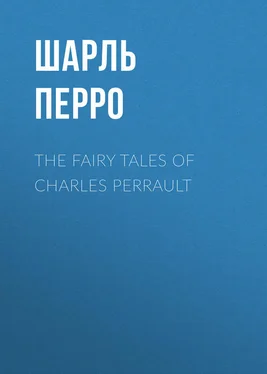
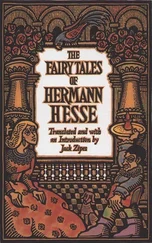
![Шарль Перро - Волшебные сказки Перро [Совр. орф.]](/books/400033/sharl-perro-volshebnye-skazki-perro-sovr-orf-thumb.webp)
